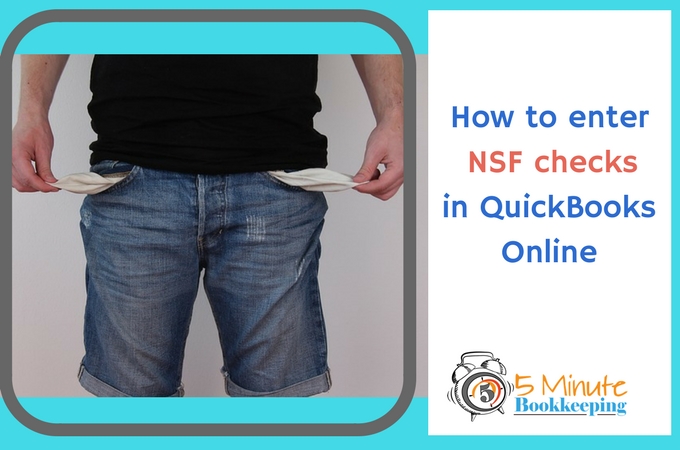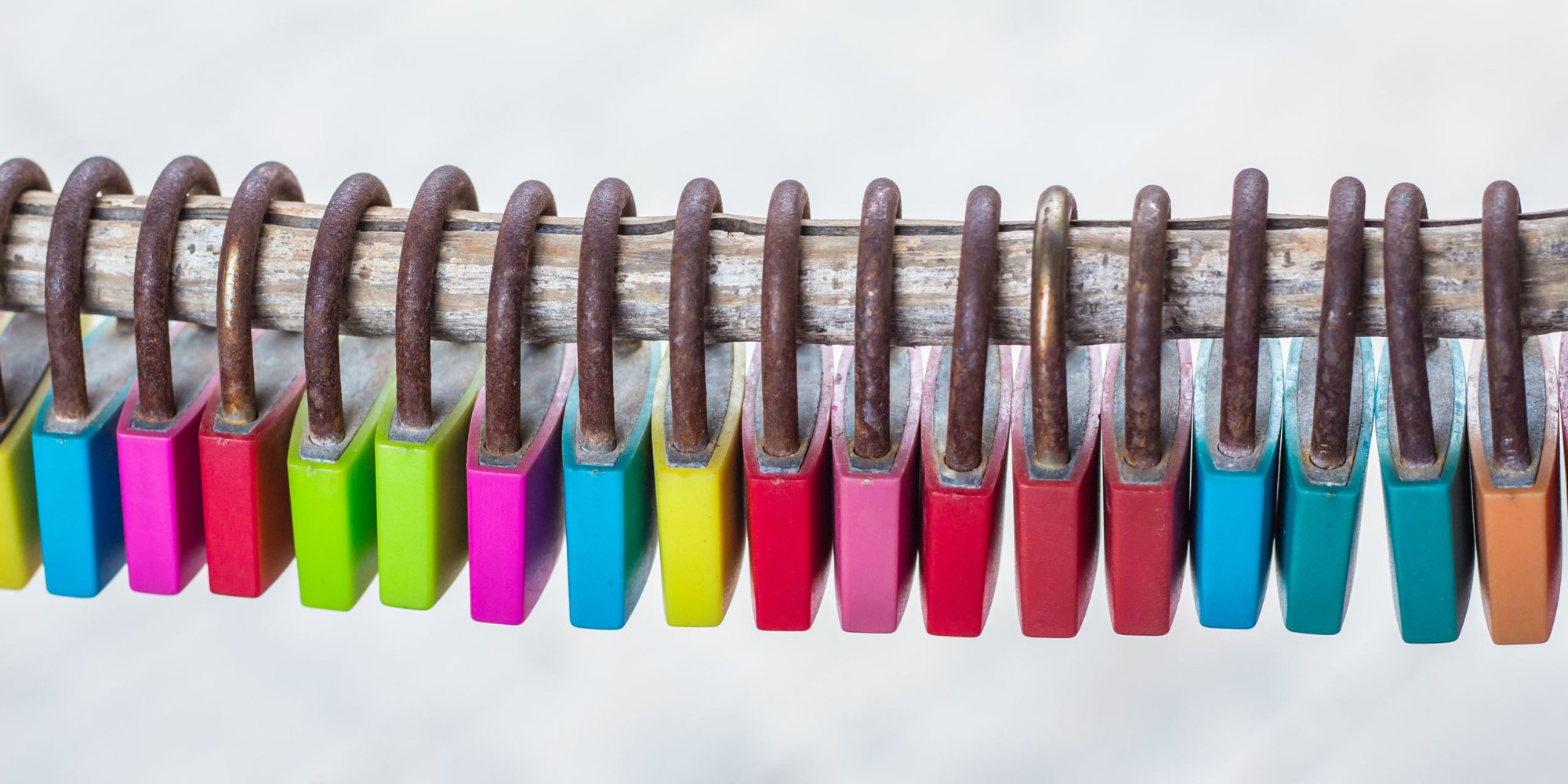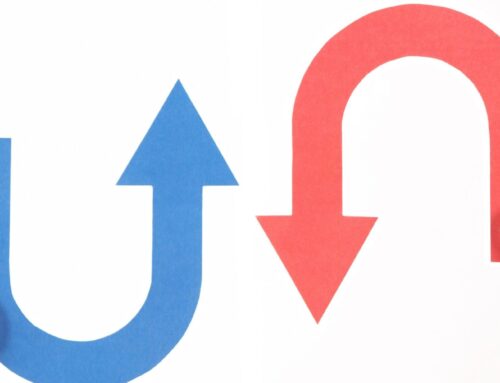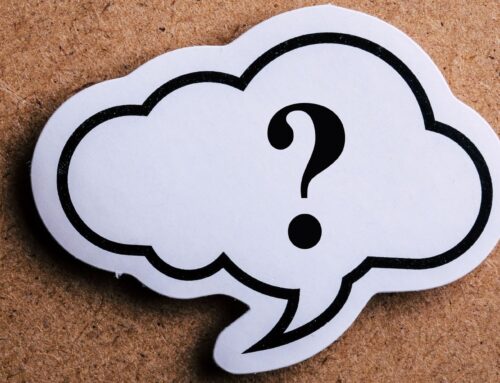Hi everyone. I am very happy to introduce to you one of our team members, Andrei Gololobov. He is one of our up and coming QBO specialists here at VM Wasek. He has written this week’s blog post on how to enter NSF checks in QuickBooks Online.

The scenario leading up to getting an NSF notice from your bank
You may one day run into a scenario where you receive payment on an invoice, deposit the check – only to find out that the customer does not have enough money in their bank account to cover the check.
Receiving a notification that a customer check has bounced can be confusing, especially to new QuickBooks Online users. Your first question may probably be something along the line of, “How do I handle this?” or, “What do I do now?”
QuickBooks Online does not yet have a direct way for recording a bounced check. However, there is a three-step process you can perform to replicate the effect of a bounced check in your QuickBooks file.
To demonstrate how a bounced check is recorded, lets run through a quick scenario in QuickBooks Online.
First, let’s imagine that you have invoiced your customer for services and recorded the invoice in QuickBooks.

Next, you have a received a check from your customer and recorded the payment in QuickBooks

Finally, you deposited your customer’s check into you company’s bank account and recorded the payment as deposited in QuickBooks.

Then, suddenly, you get a notice from the bank, telling you that your check has been returned.
To record a bounced check in QuickBooks online, you will need to record an invoice.
Here’s the video tutorial on how to enter NSF checks in QBO
Here is the step-by-step tutorial
First, you’ll need to set up some items in the Product and Service list.
- Select the Gear Icon
- Select “Products and Services”
- Click “New”

- Select “Service” as item type

Set up a bounced check item in the products and services list
The first service item you must create is a Bounced Check.
- Under the “Name*” field, enter: Bounced Check
- Check the box under Sales Information: “I sell this product/service to my customers.”
- Under Income account, select the bank account you are using to receive payments from customers (like your checking account)
 8. Select “Save and close”
8. Select “Save and close”
Set up a bounced check fee in the products and services list
Go back to your Products and Services list:
- Select “New”
- Select “Service” as the item type
- Under the “Name*” field, enter: Bounced Check Fee
- Check the box under Sales Information: “I sell this product/service to my customers.”
- Under Income account, select the expense account you are using to record bank service charges (like Bank Service Charges expense)

- Select “Save and close”
Create an invoice for the amount of the bounced check plus any bank charges
Now you will create an invoice for the amount of the bounced/NSF check plus the bank charges. You will provide this invoice to the customer. Notice that you will not make any changes to the invoice and customer payment you already entered in QBO (the payment that bounced).
- Click the plus (+) sign at the top of your QBO screen, and select “Invoice”
- Select your customer in the “Choose a client” drop down box
- For “Invoice Date”, enter the date the check bounced
- Select the “Bounced Check” service item
- Enter the amount of the original check received (the check that bounced)
- On the next line, enter the “Bounced Check Fee” service item (Remember, the bank is charging you for the bounced check, but you’re going to pass the charge to your customer, meaning they will have to issue another check for the original invoice as well as any charges related to the bounced check)
- Enter the amount you were charged by the bank (typically the NSF fee)
 8. Select Save and close
8. Select Save and close
Enter the bank service charge for the NSF fee
When a check bounces, the bank will likely charge you an NSF fee. The fee will initially be charged to your bank account, so you must record the expense. You can categorize this expense to Bank Service charge (an expense account).
To record your customer’s second attempt at payment
Once your customer gives you a new check, you will record the new check against the invoice you created earlier (for the bounced check plus the NSF charge).
- Click the Plus (+) sign at the top of your QBO screen
- Select “Receive Payment”

- Select your customer in the “Choose a client” drop down box
- Click the box next to the invoice for the bounced check
- Enter the payment date
- Select the payment method (if your customer sends you a second check, use “Check” as the payment method)
- Enter the check number as reference number
- Select deposit to Undeposited Funds or your bank account
 9. Save and Close
9. Save and Close
Final words
Now you know how to enter NSF checks in QuickBooks Online. I hope that you never have to deal with a bounced or NSF check. Unfortunately, this happens from time to time. With this method, you’ll have the confidence that your QBO won’t get messed up in the process.
















